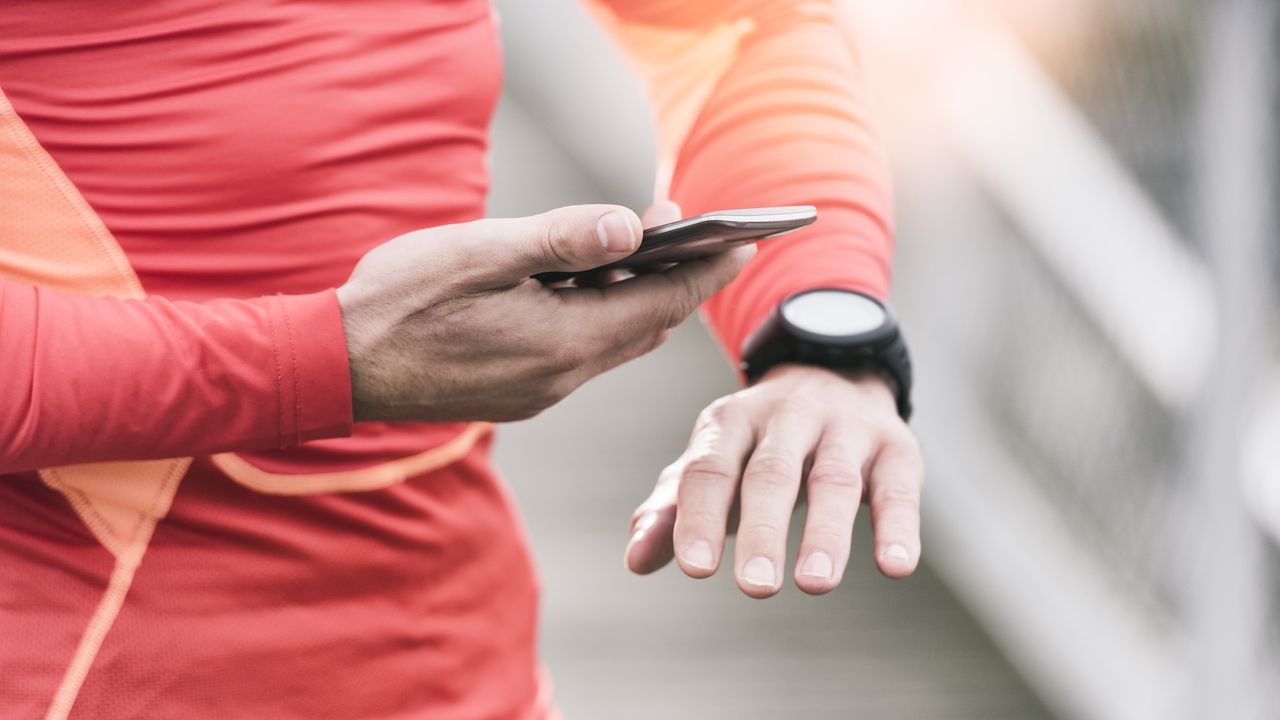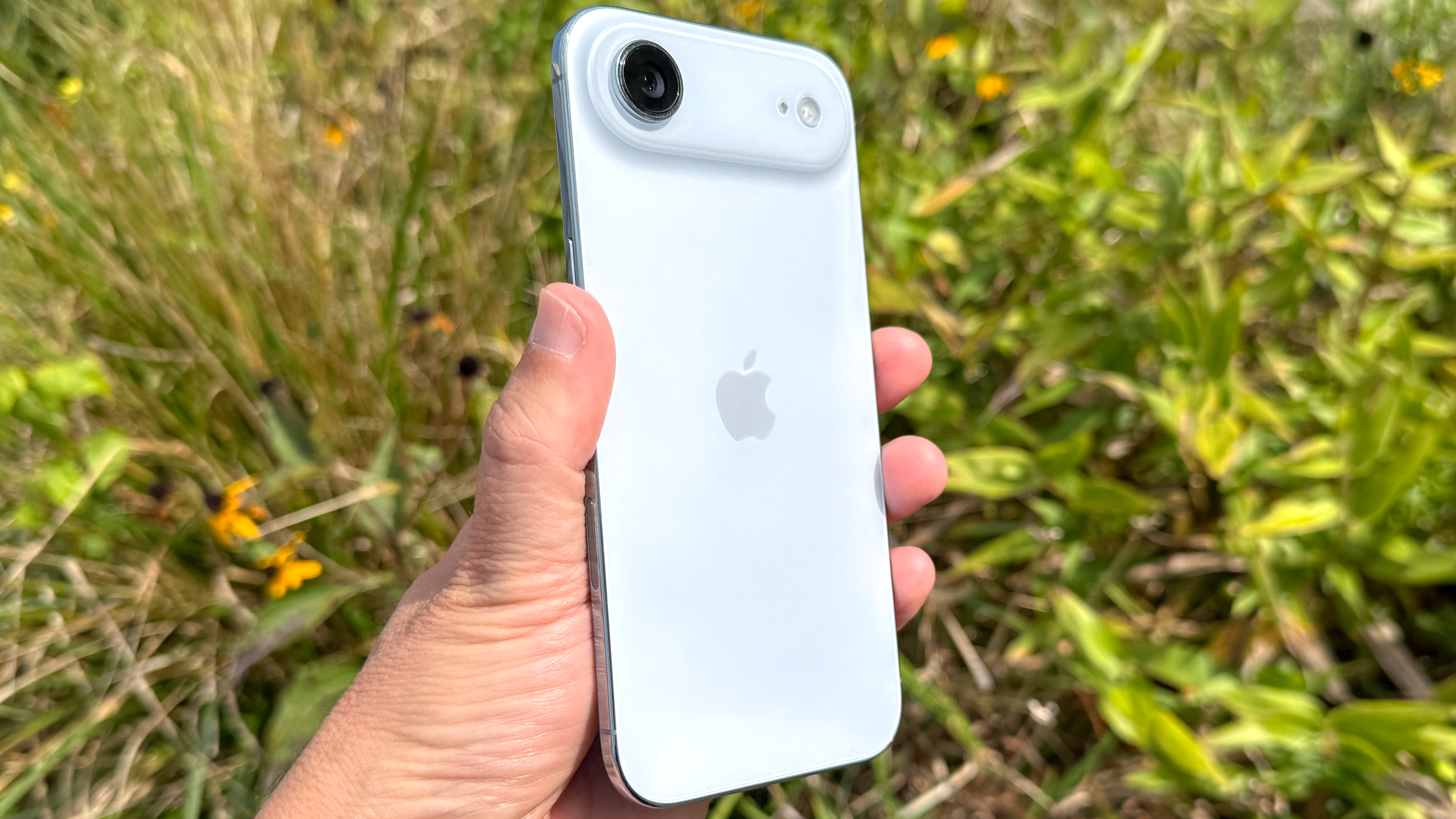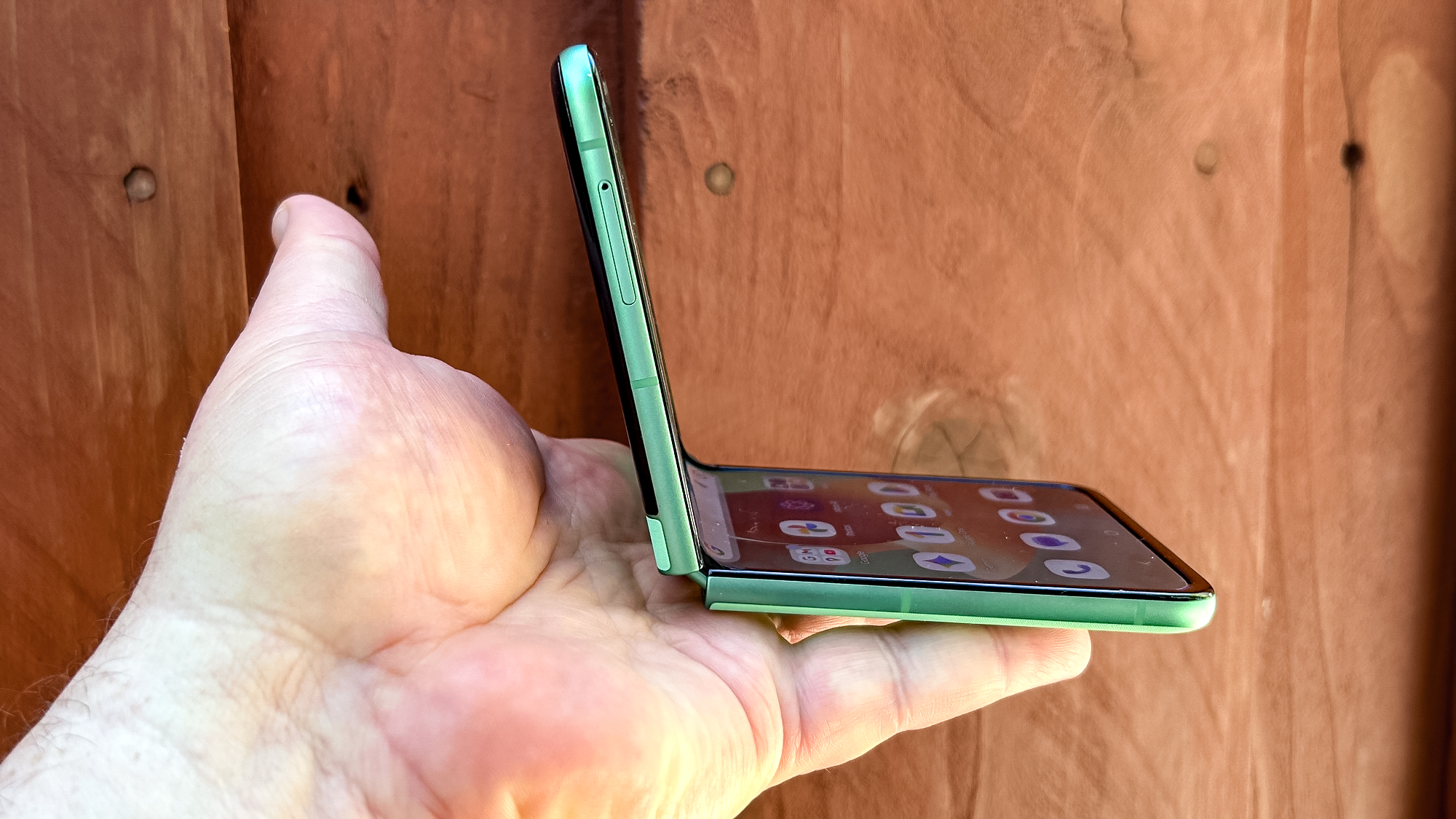
This past week, as I was testing the Meta Vanguard smart glasses, I was reminded why there’s still a need for a smartphone that isn’t the size of a Pop Tart.
Normally, when I go for a run, I want to be as completely untethered as possible — my Garmin Forerunner 570 is often the only tech I’ll bring. However, I needed to test a new feature where the Meta Vanguard could read out data from my watch mid-run. To make that happen, I needed to bring my phone — an aging iPhone 14 Pro — along with me.
The last thing I wanted to do was hold my phone in my hand, so I resorted to stuffing it into the rear pocket of my running shorts, where the 6.1-inch device bounced up and down uncomfortably the entire workout.
Now, there are plenty of smartphone armband cases available online for cheap (this popular model from Tribe costs just $15 on Amazon), but you’re still lugging around a big hunk of metal and glass.
Many of the best fitness trackers and smartwatches have evolved to a point where they can be used completely untethered from your smartphone. And that’s great — when I go for a run, I want to carry as little as possible. My Garmin Forerunner 570 can do pretty much everything I need, as it’s packed with sensors and even has music storage built in.
However, if I wanted to make a phone call or let someone track me, I’d need to spring for a smartwatch with cellular connectivity (which cost more than the standard versions), or carry my phone with me. Apart from convenience, there are also legitimate safety issues, especially for women runners, that necessitate carrying a phone with you while you’re running.
Phones have gotten super-sized

My iPhone 14 Pro, for example, measures 5.8 inches by 2.8 inches, and weighs over 7 ounces — that’s nearly half a pound. The new iPhone Air weighs just 5.8 ounces, but at 6.2 x 2.9 inches, it’s an even taller slab that I would have trouble cramming in the tiny pocket in my running shorts.
Of the models in its lineup, the iPhone 16e (5.8 x 2.8 inches, 5.9 ounces) is the closest that Apple has to a small phone, ever since the iPhone 13 mini (5.2 x 2.5 inches, 4.97 ounces) disappeared a few years back. And Apple’s smallest flagship phones are larger than ever to accommodate their 6.3-inch displays.

Here’s where one of the best foldable phones could be the answer for those looking for a current device. The Samsung Galaxy Z Flip 7 checks in at 2.9 x 3.4 x 0.5 inches closed, and tips the scales at 6.6 ounces. The Motorola Razr 2025 (2.91 x 3.47 x 0.62 inches closed) is a little bulkier, but checks in at the same weight — and it’s significantly cheaper. While both of these phones are twice the thickness of my iPhone, they’d have a better shot at fitting in my pocket.
As someone who recently had to pick up a pair of reading glasses, I get the appeal of a larger display. I hate having to squint at the screen to do Wordle and Connections. But the tradeoff is that you’re stuck with something that’s less adaptable to situations where space is at a premium. Maybe Apple will come out with an iPhone Flip to go alongside the iPhone Fold — but by that time, the best smart glasses may do everything I need.







